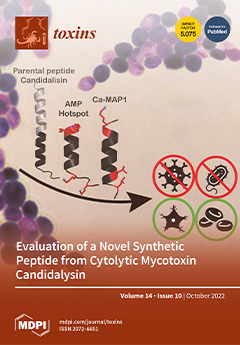Cotton bollworm (
Helicoverpa armigera) is a Lepidopteran noctuid pest with a global distribution. It has a wide range of host plants and can harm cotton, tomato, tobacco, and corn, as well as other crops.
H. armigera larvae damage the flower buds,
[...] Read more.
Cotton bollworm (
Helicoverpa armigera) is a Lepidopteran noctuid pest with a global distribution. It has a wide range of host plants and can harm cotton, tomato, tobacco, and corn, as well as other crops.
H. armigera larvae damage the flower buds, flowers, and fruits of tomato and cause serious losses to tomato production. Tomato uses the allelochemical 2-tridecanone to defend against this damage. So far, there have been no reports on whether the adaptation of
H. armigera to 2-tridecanone is related to its symbiotic microorganisms. Our study found that
Corynebacterium sp. 2-TD, symbiotic bacteria in
H. armigera, mediates the toxicity of the 2-tridecanone to
H. armigera.
Corynebacterium sp. 2-TD, which was identified by 16S rDNA gene sequence analysis, was screened out using a basal salt medium containing a unique carbon source of 2-tridecanone. Then,
Corynebacterium sp. 2-TD was confirmed to be distributed in the gut of
H. armigera by quantitative PCR (qPCR) and fluorescence in situ hybridization (FISH). The survival rate of
H. armigera increased by 38.3% under 2-tridecanone stress after inoculation with
Corynebacterium sp. 2-TD. The degradation effect of
Corynebacterium sp. 2-TD on 2-tridecanone was verified by ultra-high-performance liquid chromatography (UPLC). Our study is the first to report the isolation of gut bacteria that degrade 2-tridecanone from the important agricultural pest
H. armigera and to confirm bacterial involvement in host adaptation to 2-tridecanone, which provides new insights into the adaptive mechanism of agricultural pests to host plants.
Full article






